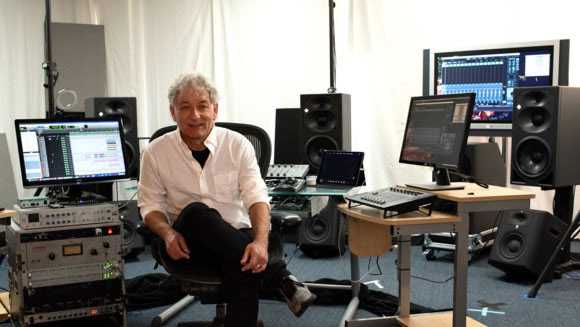Herbert Waltl gets immersive with Neumann
- Details

The system flexibly switches between Dolby Atmos and Sony 360 Reality Audio immersive music formats without the need to reposition any speakers by combining a 7.1 layout with nine height and three floor-level speakers.
Waltl, an award-winning producer, musician and technology evangelist who founded mediaHyperium in 1996, had been planning to build a new studio before the pandemic. For years he had mostly been working at Skywalker Sound in the Bay Area, for the last five years in partnership with Eric Schilling, a recording engineer and broadcast audio mixer with a long list of Grammy and Emmy Awards to his name. But when the new virus forced everyone into lockdown and the music school closed, “We said, the best thing, the safest thing, because of the pandemic, is to work out of here,” says Waltl.
Neumann KH 420 tri-amplified midfield mains plus a pair of Neumann KH 870 bass-managed subwoofers are deployed. Five Neumann KH 310 tri-amped near field monitors on stands – three across the front plus left and right height channels – support the overhead channels of Sony’s object-based 360 Reality Audio. Hanging from the ceiling and positioned slightly closer to the mix position per the recommendations of Dolby Laboratories, four Neumann KH 120 bi-amped near field speakers deliver the overhead zone for Dolby Atmos mixes.
Waltl made something of an informed leap of faith in selecting the Neumann system at mediaHyperium, although he has logged plenty of hours with one particular model working on various projects. “I had already heard the KH 310s at Skywalker and other studios, where I have used them. I was very impressed with them,” he says.
“I had never used the larger ones, the KH 420s,” says Schilling. Like Waltl, he says, “I only used the 310s before. In this room I’m probably eight feet away from the speakers. What I like is that the system has a lot of detail and you don’t have to play it loud to hear that. I work at a pretty moderate gain for most of the day, or I’d get too tired. I’m probably running this system at 20% of what it will do, in terms of volume, so it’s got a lot of headroom. And it’s nice having two subs, because the low end is a little more consistent. So it’s a very non-tiring system with a lot of detail.”
Previous initiatives to introduce formats beyond stereo have largely failed commercially due to the unwillingness or inability of consumers to install a large number of speakers in their homes. Now, though, manufacturers offer simple and cost-effective solutions such as soundbars and smart speakers that support immersive playback. As a result, says Waltl, “We have a second room, a listening room, where we put a Sennheiser Ambeo Soundbar. We can hear how the sound translates to a soundbar.”
And while Sony’s immersive format, based on Fraunhofer’s MPEG-H technology, was initially intended to deliver 3D music to headphones, “Sony 360 can now go to the Sennheiser AMBEO Soundbar and there are receivers that will send it out to a speaker system,” Schilling reports.
















